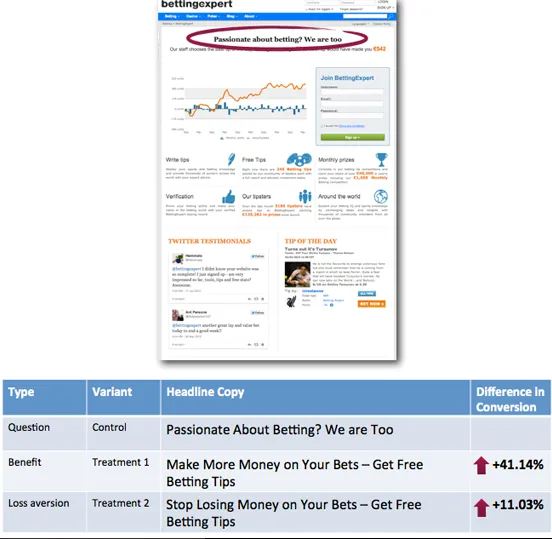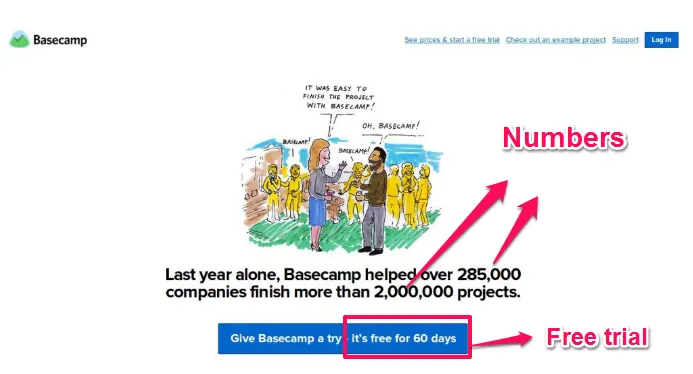8 steps to a successful content marketing strategy
A closer look at the content marketing plan essential for the success of your business.
The popularity and budgets for content marketing only seem to be increasing. The reason? The multiple benefits including higher domain authority and search engine rankings, more referral and social traffic and increased conversion potential.
Yet another reason for its popularity is the powerful results obtained with minimum upfront costs. This means you just need an idea and a plan to execute it.

Image credit: Shutterstock
While content marketing can be done by anyone, not everyone knows how to do it well. Most content marketing strategies are ineffective because they are haphazardly planned, and companies and individuals ultimately give up on them. The truth is, you need a really good strategy to constantly produce, repurpose, and promote engaging content.
This article outlines the eight steps leading to a successful content marketing strategy.
Step 1. In-depth research: Does your content fill a void your ideal customer faces?
Research includes studying your competitors and understanding the market and your ideal customer’s problems. Create content your customers demand instead of writing about what you think the readers want. The worst kind of content marketing starts with companies focused on showing how great their product or service is, instead of filling a void or addressing a clearly defined pain point.
The most effective content is never about your company, your products or yourself. Instead, it starts with acknowledging a pain point and the best ways to solve it (including your solution). Putting your customers’ needs above your own builds trust.
The folks at Buffer come up with in-depth research on every topic that they write about. Belle Beth Cooper, their earliest content creator, shows how to research efficiently in this article “How We Research: A Look Inside the Buffer Blog Process”.
Step 2. A strong headline: A headline either draws in readers or pushes them away
As per Copyblogger, eight out of 10 people will read your headline. Two out of 10 will read the rest of what you wrote.
Use the ‘four-Us’ approach to write clickable headlines:
- Make the headline useful to the reader — The Science Of Viral Content: Which Emotions Make Us Share?
- Include a sense of urgency for the reader — Are You Losing Sales By Giving Customers Too Many Choices?
- The headline should convey the benefit in a unique way – How I Generated 197,013 Visitors A Month Without Spending A Dollar On Ads.
- Using all this to craft an ultra-specific headline — 10 Statistics Traps in A/B Testing: The Ultimate Guide for Optimizers.
Make the headline useful to the reader by telling them what’s in it for them. It should raise the reader’s curiosity to click. To make it search-engine friendly, the length should be fewer than 70 characters (half a tweet). While there are many formulas for writing the perfect headline, A/B test each version of the title to know which one works best for you.
In a case study by Unbounce, a website tested three headlines. The winning headline boosted conversions by 41 percent.

Step 3. Effective call to action (CTA): Does your call to action convince the visitor to take immediate action?
The most effective call to action helps the customer discover the next step in your content campaign. This can include a free product trial, entertaining video, in-person consultation or enrolling for a webinar.
The more value your content strategy delivers, the more likely your ideal customer is to engage and do business with you. Can you offer them a free sample or a discount on the product? Once you know the lifetime value of your buyers, you’ll realise that it’s not the first sale, but the regular sales you’re after.
Basecamp, a project management tool, showed the number of projects completed and number of companies using it to stand out. Also, the 60-day trial period eliminated further doubts.

Step 4. Multiple content formats:Use multiple content formats to lead the visitor to your products and services.
The following types of content formats generate more targeted leads.
- Guides: Detailed how-to guides position you as an expert in your field. Long posts appear on Google when long-tail keywords are searched. Solve a real problem your audience faces with the detailed how-to guide.
Neil Patel, the founder of Crazy Egg, Hello Bar, and KISSmetrics writes some of the best how-to guides. The detailed pieces of content have visual flair.

- Listicles: People are busy; they’d appreciate if you pull up a comprehensive list of all the resources to help them make more informed decisions. Create a list that fills a need or solves a problem and make it skimmable since often it is skimmed and not read.

- Case studies: Include storytelling in case studies to connect with your audience. Set up the world and how the problem negatively impacts the customer’s life. Confront her with various solutions. In the final stage, demonstrate how your company offers a life- changing solution. Talk about both success and failure. Remember, the story is about them while your product is a small part of the journey.
This case study by Neil Patel on how he helped Timothy Sykes grow his revenues to $15 million shows the problem, strategies, and the result along with a call to action.
- Personal stories: Stories such as personal essays, opinions, and inspirational tales engage and inspire your audience on an emotional level. Be vulnerable for others to disagree with or criticise.
Here’s a touching personal story, For Jessica, by writer Jennifer Lawler.
Step 5. Visual content: Visual content is engaging, memorable, and effective as it helps the audience process, comprehend, and retain more information rapidly.
Different audiences prefer consuming content in different visual forms. Repurposing content in a visual format increases the life of the content and gives more bang for your buck.
These are some proven visual content types you can use:
- Slides: Break down complex information into easily digestible slides on SlideShare, which has more than 60 million unique visitors. Tell your stories using compelling visuals and include a call to action to maximise the effectiveness of your presentation.
- Infographics: Infographics get 3X times more likes and shares on social media compared to other types of content. Try to limit the statistics to 10–12 focused on a single topic with the length of the infographic not more than 8,000 pixels. Anything more than this might result in a jumbled mix of facts and figures.
- Videos: Video content has been the most engaging and interactive kind till date. Create videos with high quality content to engage the viewer. Push and promote them across all possible channels to the point that they go viral.
KISSmetrics generated 2,512,596 visitors and 41,142 backlinks from 3,741 unique domains in two years with 47 infographics.
Step 6. Guest blogging: This strategy builds brand awareness, establishes your authority, and improves search rankings.
Buffer used guest blogging to go from 0–10,000 customers in nine months. The benefits of guest blogging include:
- Attracts attention of clients looking for similar services.
- Combining guest posting with on-site content strategy leads to better SEO, more traffic, and greater conversions in a short time period.
- Building relationships to extend the guest posting to your clients, thereby extending their reach.
To grow your reputation quickly among the relevant audience, share your insights on both larger general sites and smaller niche websites. Reach out to a new audience, get established as a thought leader, and gain high quality backlinks.
Step 7. Tracking the key performance indicators (KPI): Only 21 percent marketers are successful at tracking the ROI of their content marketing.
While every business has different KPIs, identify those relevant to your business before starting the content marketing campaign. The key performance indicators to measure the success of your content marketing are:
- Measuring traffic: Unique visitors, page views, total backlinks, and source of traffic.
- Measuring engagement: Bounce rate, new vs returning visitors, time spent on website, shares by content type, and number of comments.
- Measuring conversions: Opt-in rates, click-through rates, number of leads, and ROI.
When starting a new campaign, track the traffic. Once the visitor numbers go up, start measuring the content engagement rate. After building a set of loyal readers who engage with your content regularly, focus on measuring the conversion rates and ultimately the ROI of your campaign.
Step 8. Content promotion: Even the most amazing piece of content is as effective as the target audience engaging with it. It takes more than simply publishing the post to have your content be seen and shared by the right audience.
Here are the four effective content promotion strategies:
- Influencer marketing: Influencers sharing your content can lead to 3–10 times increased conversions. Mention influencers in your content and after publishing the work, email them your post. The reach of your post increases when they share your content with their followers.
- Social media snippets: A single content piece has a dozen of snippets such as quotes, statistics, titles, and their variations and images that can be shared multiple times over social media platforms. Capture the attention of the users who missed the first update using social media snippets.
- Submitting to content communities: Submit your content to communities that have a huge number of readers and where other writers share their content. Since the competition for viewers is high, your content has to be the best. Start with Biz Sugar, Reddit, and Business 2 Community.
Sol Orwell, the founder of Examine.com, a website educating on nutrition and supplementation built a seven-figure business from Reddit.
- Creating content distribution networks: Outbrain and Taboola place ads for your content on high-profile websites whose readers might be interested in reading your content. Their cost per click is comparatively low.
Use content promotion to amplify your content’s reach to the most relevant audience.
Which among these eight strategies have given you the best results?
(Disclaimer: The views and opinions expressed in this article are those of the author and do not necessarily reflect the views of YourStory.)







